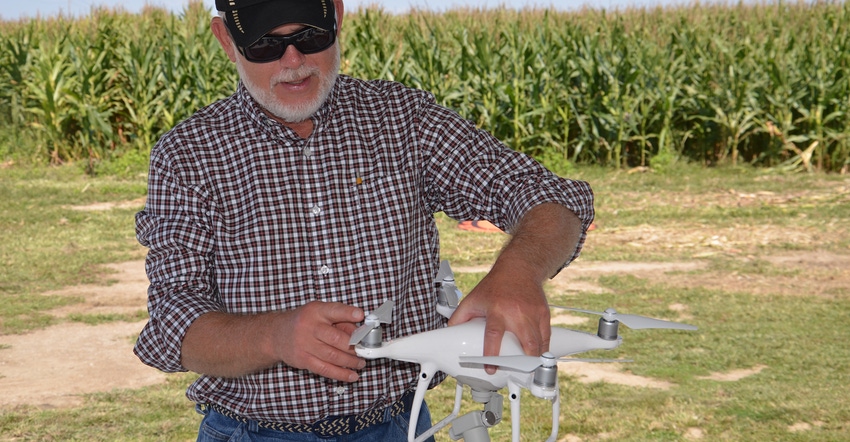
If you fly an unmanned aerial vehicle, commonly called a drone, over crops in your operation to make decisions about crop management, then hopefully you have already obtained your UAV pilot’s certificate from the Federal Aviation Administration. If you haven’t and you’re using the drone for commercial purposes, even if only on your own farm, you’re flying it illegally. To protect yourself and others, you need to obtain the certificate outlined under Part 107 of the FAA code, Bob Nielsen says.
Nielsen is the Purdue University Extension corn specialist. He became interested in flying drones when he realized how much information he could collect about both research plots and on-farm trials. He obtained his Part 107 certificate and, working with Jim Camberato, also a Purdue Extension agronomist, and graduate students, he is moving deeper into discovering kinds of crop data that can be collected using cameras and sensors mounted on UAVs.
This doesn’t make him a drone expert, Nielsen acknowledges, but it does mean that he pays attention whenever the FAA issues information about drones. The agency issued final rules for drones in agriculture in December 2020.
“There were some changes in these final rules that Part 107 certificate holders ought to be aware of,” Nielsen says. “If you have a certificate and fly a drone, they will affect you in the near future.”
Major changes
Nielsen outlined these changes to aid other certificate holders in a recent article posted at the Chat ’n Chew Café.
Remote identification. Most drones will need the capability to broadcast their remote identification to authorized public safety groups in the future. Drone manufacturers will make it a default feature on new drones going forward. Remote ID modules will be available for retrofitting existing drones. Learn more at this relatively easy-to-read source.
Flights over people and at night. Previously, these activities required FAA authorization or waivers. New rule changes simplify these types of flight operations. You can learn more at faa.gov.
Anti-collision lighting. One of the new night-flight requirements, Nielsen says, will be equipping your drone with anti-collision lighting. He notes that it’s not intended to help you track your drone. Instead, the goal is allowing other aircraft to see your drone at night to avoid a midair collision.
Nielsen references the article, Best Anti-Collision Drone Light — 7 Strobe Lights Tested for Visibility, which compares seven different drone strobe light options as a starting point for learning more about drone lighting:
Staying current. Until now, certified Part 107 pilots had to pass a recurrent knowledge test every two years, Nielsen explains. There is no longer a requirement for existing certificate holders to take a test or pay a fee. Instead, Part 107 certificate holders will complete an online safety training course every two years. The safety course includes information required to be certified for legally operating drones at night. Visit pilotinstitute.com.
The online safety course appears to be up and functional. However, you must enter your certificate number to obtain access. If you’re ready to renew, access it at faasafety.gov.
About the Author(s)
You May Also Like




